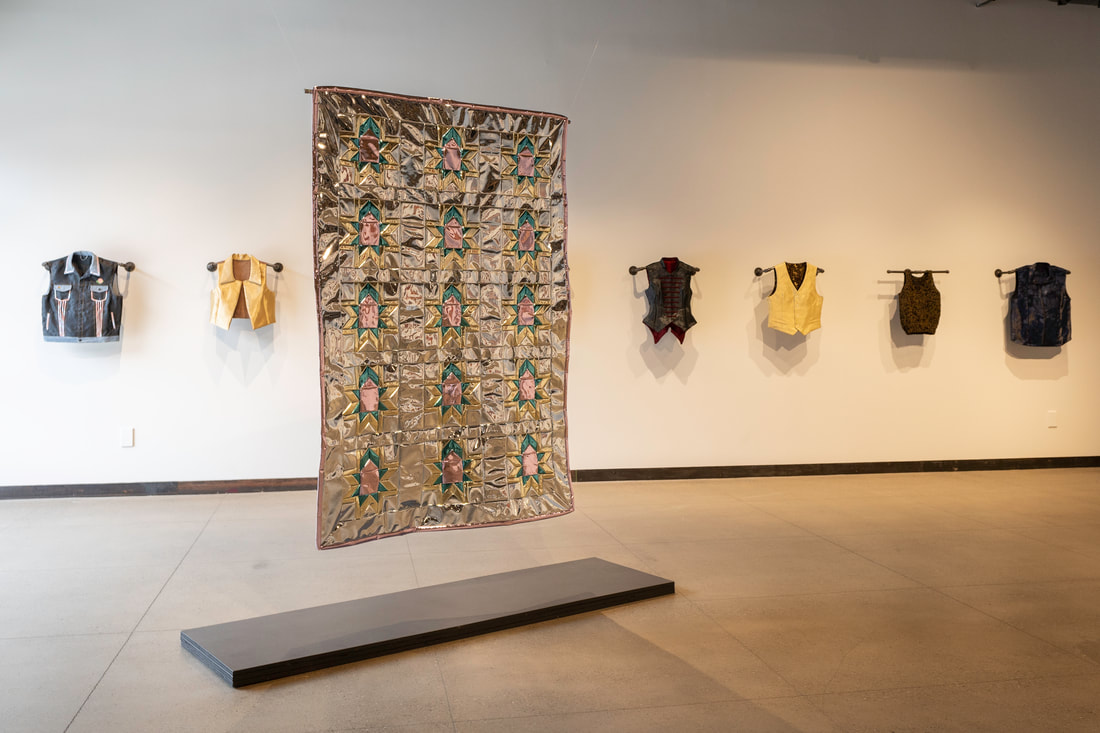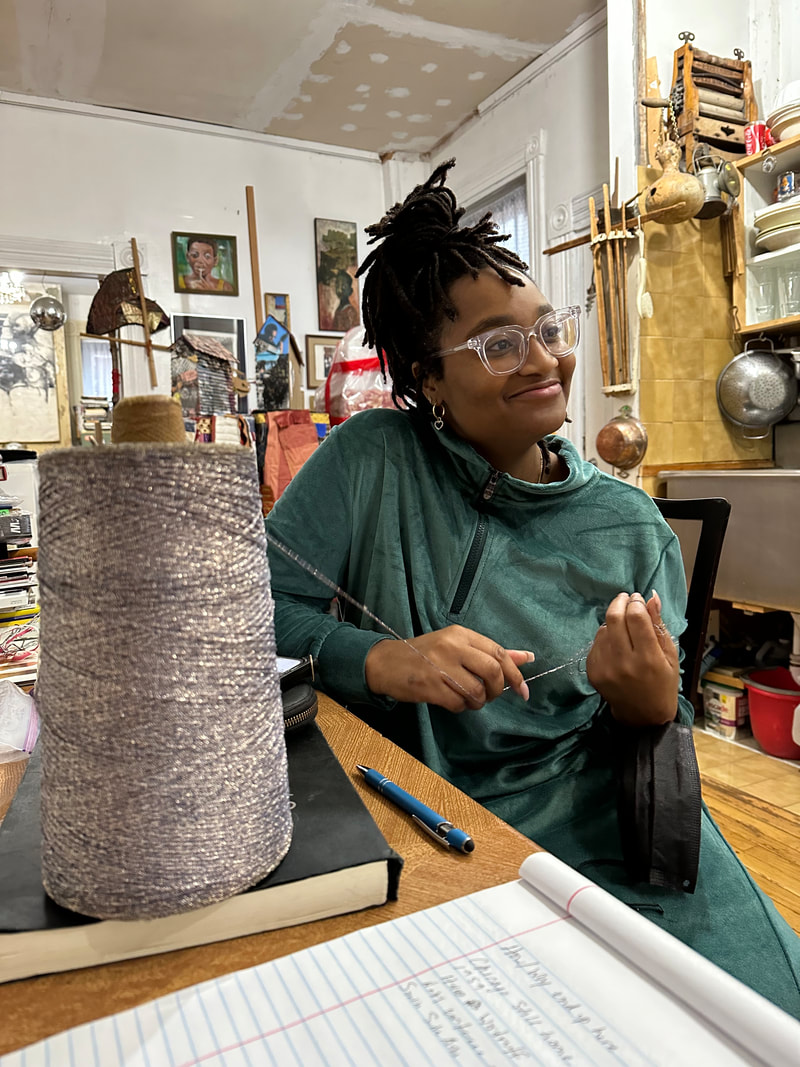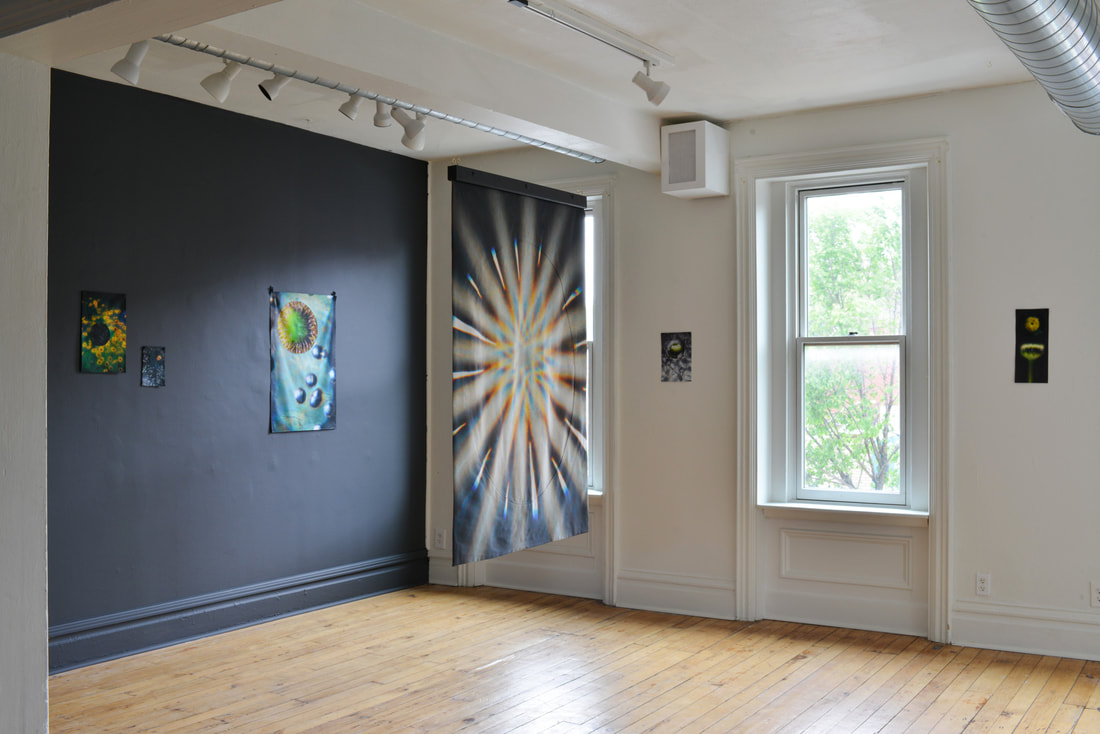Edited by Anna Mirzayan
Original Publish Date: 11/13/2021
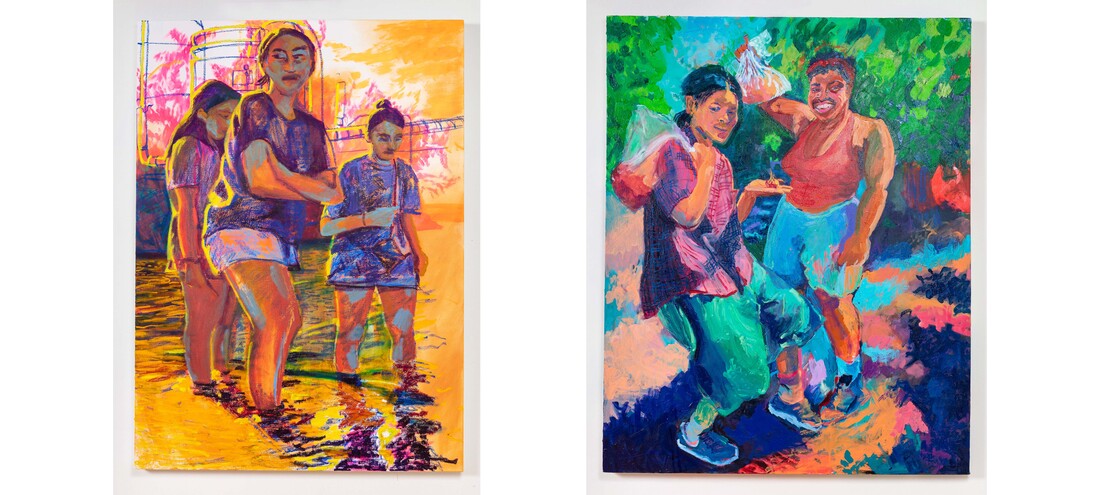
Artwork by Zoe Scruggs and Lou Tandon
“This Is Crazy”(2021), Lou Tandon oil and acrylic paints on canvas.
“I Love You Maria!” (2021), Zoe Scruggs, oil on canvas.
The views and opinions expressed in this article are solely those of the author. They do not reflect the opinions or views of Bunker Projects or its members.In Bunker Projects’ first co-residency show, Maybe We Can Rest Here (2021), Pittsburgh artist Lou Tandon and visiting artist Zoe Scruggs explore themes of resistance and identity through their vivid, expressionist-style works. Using saturated colors and paint strokes that seem to distort and shift before your eyes, Scruggs and Tandon create an engrossing and warped portrayal of their worlds, both physical and psychological. The tranquil gallery, with its sunny, crisp white walls and natural wood floors adorned with buckets of delicate, dried floral arrangements, lends an earthy backdrop to the show and provides some context for a collection of work that draws much of its inspiration from the natural world. The space serves as a potential resting ground for an exhaustive portrayal of life and labor. While the walls teem with canvases, paper, and wood panels exploding with color and rolling textures that vibrate with an energy that borders on chaotic, the gallery space holds a promise of repose.
Scruggs’ and Tandon’s works present a shared interest in examining their perceptions of self in relation to the expectations of their environments, as well as a taste for dynamic color palettes, exaggerated shadows and highlights, and extreme layering and brushstrokes. In their debut co-residency, their styles are so cohesive that it can be hard to tell which artworks belong to whom. While Scruggs and Tandon report drawing inspiration from their physical surroundings, the expressive coloring and swirling forms used are not any that would be found in nature; instead, the work presents a subjective view of their experiences moving through the world. In viewing Maybe We Can Rest Here it is impossible to ignore the labor of the field in the paint, layered to a breaking point, the heat of the sun and exhaustion in the saturated reds and oranges, and the restlessness held back in each canvas.
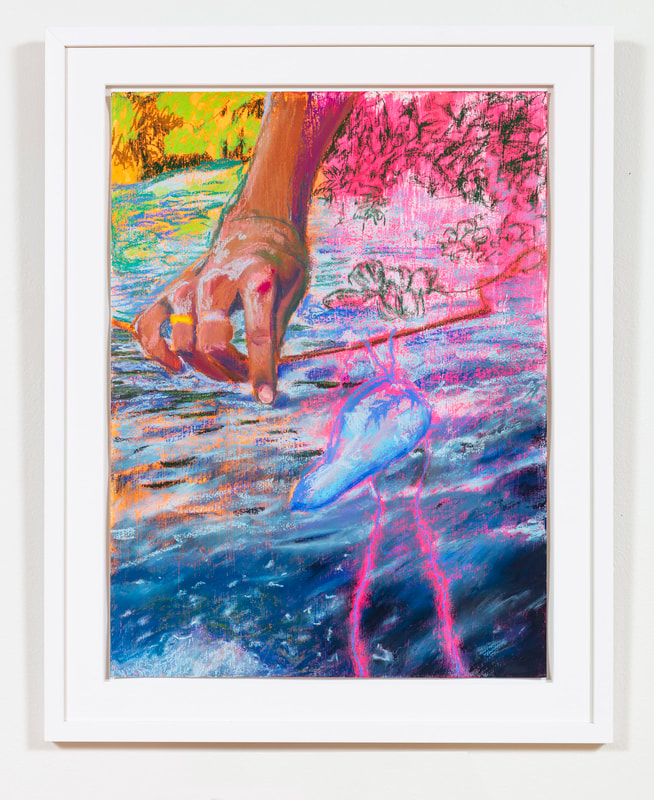
“My Dad Holding a Poisonous Siphonophore,” (2021) soft pastel and acrylic paint on watercolor paper, 18×24”
In Tandon’s “My Dad Holding a Poisonous Siphonophore” (2021), neon-pink trails snake from a creatures’ floating tentacles up to entangle a branch, culminating in a vivid frenzy that radiates out of the canvas. Even without knowing what a siphonophore is, the sensation of being close to one is palpable. Looking at the canvas, viewers can feel the electricity twitching through the paint and an awe of nature coupled with a cautionary sense of repulsion. Tandon’s synesthetic technique of utilizing bright, concentrated color to evoke emotion and represent energy is apparent in many of their pieces throughout the show. In “9 Bees, 3 People, 2 Carrots,” (2021) pastel and acrylic come together in a work that buzzes like a beehive; in “Gentle Inquiry,” (2021) a forehead streaked with an angry red radiates an inescapable heat and frustration; and in a wall in the middle of room, looming over the flowers, nine pieces depict a flurry of “Non-Binary Bats” (2021) swooping out and over the viewer. The brushstrokes work overtime here, conveying movement that leaps off the canvas. In these pieces, Tandon confronts and grapples with the idea of identity, entwining a piece of themself inextricably into each work.
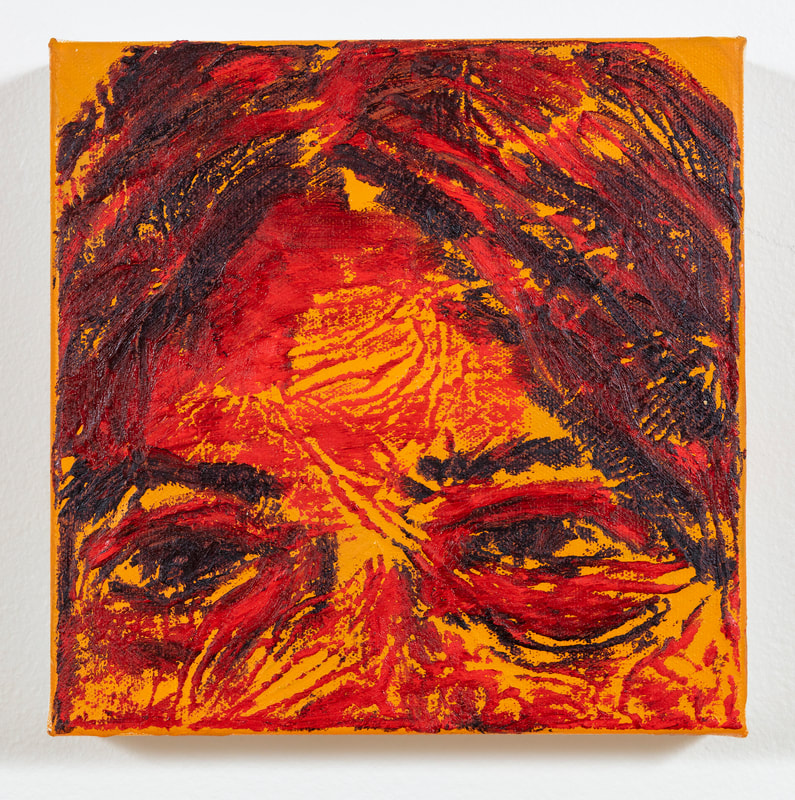
“Gentle Inquiry” (2021), oil paint and soft pastel on canvas, 8×8”
Scruggs’ work is equally energetic, but with an additional layer of distortion that invites the audience to constantly consider what is real and what is perceived. In several instances, she presents the same image from different angles and perspectives, washed over in different hues, displaying a striking, thoughtful control over color. Scruggs, who is visiting Pittsburgh for her residency and VACE Fellowship, is an experienced farmer as well as painter and weaves agriculture into much of her work. The world she presents is not exactly a garden oasis, lush and airy, but instead, an affecting portrayal of toil. In “All Flowers Die (Blue)” (2021) and “All Flowers Die (Red),” (2021) the subject dangles a wilted flower between themselves and the viewer, demanding we appreciate the gravity of its death and grieve accordingly. This image, appearing on either end of a wall, ensures that no matter which end you start at, there is a reminder on the other side of this loss. In “Watering for Now,” (2021) we see the gardener crouched in the soil holding a hose up to a crop we cannot see. Here again, color manipulates and dictates this world; the gardener, at first in distinctive color, fades into the green and blue of the background as the eye travels up the arm and into the hose. The gardener appears to be growing from the garden just as much as they are tending to it.
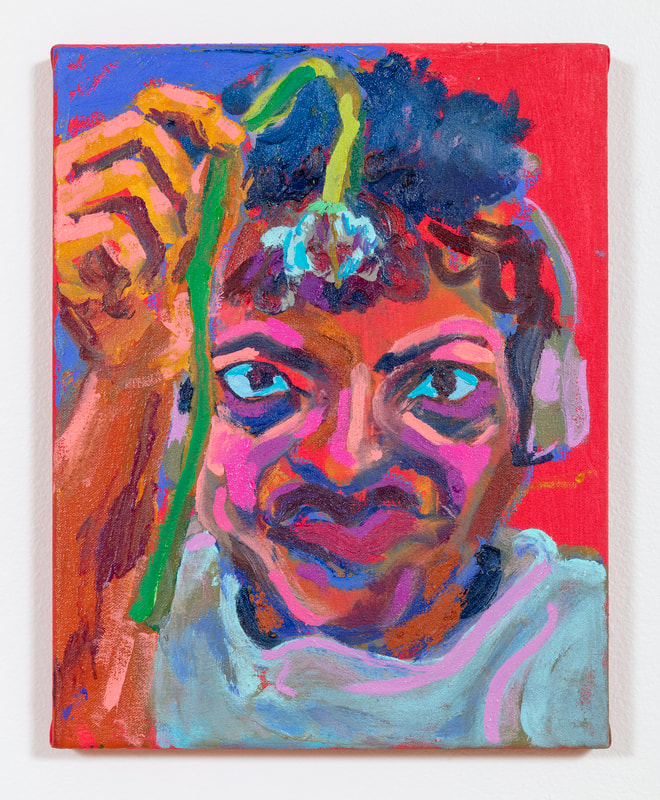
“All Flowers Die (Red)” (2021), oil on canvas, 12×16”
Two large canvases, one from each artist, one in each of the two rooms, anchor the show. Each painting depicts a group of people, their full bodies and surroundings visible within the frames, and in each, the full breadth of the artists’ abilities is on view. In Tandon’s “This Is Crazy,” (2021) three figures stand ankle deep in water and again, Tandon’s colors do the heavy lifting. The image is cast in a warm orange glow, the reflection in the water making it all the more luminous. The primary figure gazes out of the canvas as the sun gleams on their backs. In Scruggs’ “I Love You Maria!,” (2021) we see two figures at ease – the happiest and most relaxed of Scruggs’ characters – enjoying the fruits of their labors and smiling into the room, as if posing for a picture. In contrast to the warmth in Tandon’s piece, this painting’s edges soften and relax into cool tones and, once again, we see the figures melt into their background. Both canvasses keep watch over the gallery and the figures seem to stand relieved, or resigned, prepared to finally rest here.
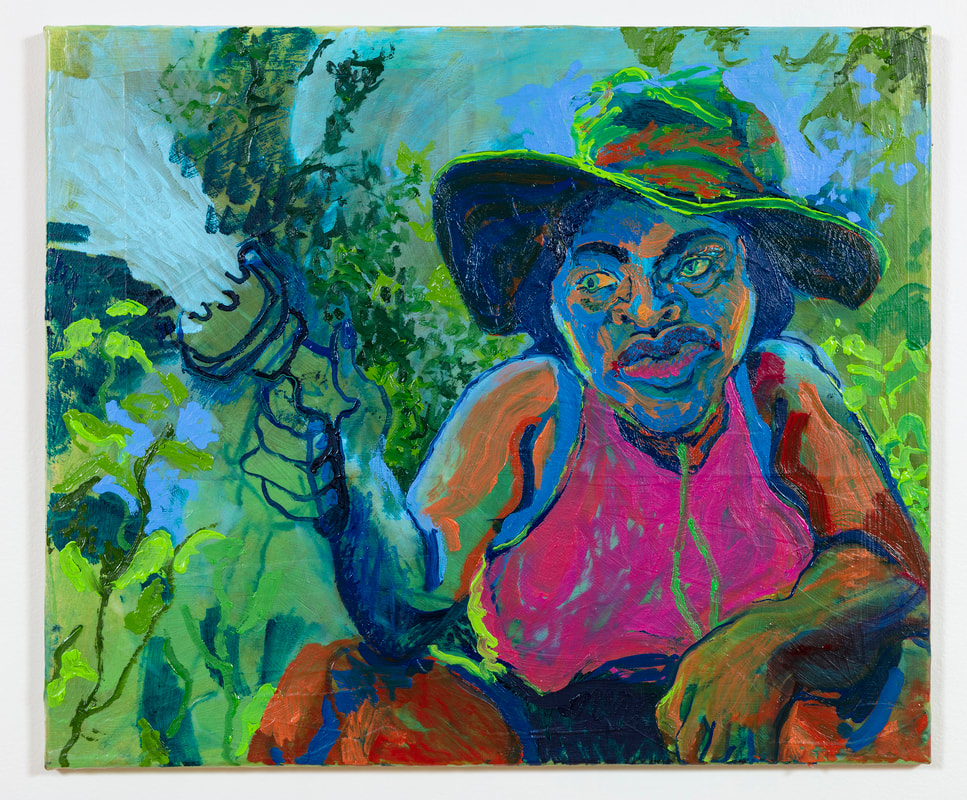
“Watering for now” (2021), acrylic, paper, and oil on canvas, 24×20”
Maybe We Can Rest Here presents a sweeping body of work from two artists who are uninhibited in their explorations of perception, gender, the body, labor, and above all, identity. Tandon and Scruggs’ art and interests are distinct yet seamless, resulting in a harmonious co-residency that appears to be in conversation with itself. Bunker Projects provides an ideal setting for the show, allowing the work and the conversation to take up as much space as they need. The show is worth multiple visits, as there is always something new to discover in the layers of paint.
Brigid Moser resides in PIttsburgh, Pennsylvania and works for the American Institute of Architects Pittsburgh Chapter. She graduated from the University of Pittsburgh in 2016 with a dual BA in History of Art and Architecture and English Writing.
Maybe We Can Rest Here is on view at Bunker Projects through November 21st, 2021.
